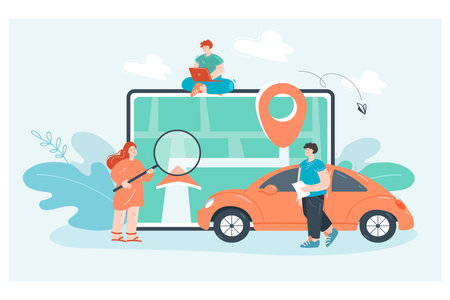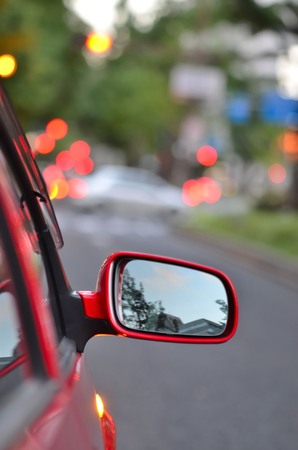1. Understanding Collision Coverage
When it comes to auto insurance, collision coverage is one of the key components that helps protect you financially after an accident. But what exactly does it cover, and how does it differ from other types of auto insurance? Let’s break it down in simple terms.
What Is Collision Coverage?
Collision coverage is a type of auto insurance that helps pay for the repair or replacement of your vehicle if its damaged in an accident, regardless of who is at fault. This includes accidents involving another vehicle, hitting an object like a tree or a pole, or even single-car rollovers.
What Does Collision Coverage Pay For?
Collision coverage typically covers the cost of repairing or replacing your car, up to its actual cash value (ACV), minus your deductible. Here’s a quick comparison of what collision insurance covers and what it does not:
| Covered by Collision Insurance | Not Covered by Collision Insurance |
|---|---|
| Damage to your car from a collision with another vehicle | Medical bills for you or passengers |
| Damage from hitting an object (such as a tree, pole, or guardrail) | Damage caused by theft or vandalism |
| Single-car rollover accidents | Weather-related damage (floods, hail, etc.) |
| Accidents where youre at fault | Damage to another person’s vehicle |
How Is Collision Coverage Different from Other Auto Insurance?
Collision coverage is often confused with other types of auto insurance, such as comprehensive coverage and liability insurance. Here’s how they differ:
Collision vs. Comprehensive Coverage
While both cover vehicle damage, comprehensive insurance pays for non-collision-related events, like theft, natural disasters, or vandalism, whereas collision coverage specifically applies to vehicle crashes.
Collision vs. Liability Insurance
Liability insurance covers damage you cause to another persons vehicle or property, but it does not cover damage to your own car. Collision coverage ensures that your vehicle repair costs are covered, even if youre at fault in an accident.
Do You Need Collision Coverage?
Collision coverage is optional in most states, but if you have a car loan or lease, your lender will likely require it. Even if it’s not required, having collision insurance can provide peace of mind knowing that you won’t have to pay for costly repairs out of pocket after an accident.
2. Reporting the Accident
After an accident, its crucial to report the incident as soon as possible. Properly documenting the details and informing your insurance company will help ensure a smooth claims process. Follow these steps to report the accident correctly.
Gather Essential Information
Before reaching out to your insurer, make sure you collect all the necessary information at the scene. This will help expedite your claim and provide accurate details to your insurance company.
| Information to Collect | Details |
|---|---|
| Driver Information | Names, contact details, and insurance info of all involved drivers |
| Vehicle Details | Make, model, and license plate numbers of all involved cars |
| Accident Location | Address or nearest landmark of the accident scene |
| Photos & Videos | Take pictures of vehicle damage, road conditions, and traffic signs |
| Witness Statements | Names and contact information of witnesses, if available |
Contact Your Insurance Company
Once you have gathered all the necessary details, call your insurance provider to report the accident. Provide them with an accurate description of what happened and follow their instructions on the next steps.
Information to Share with Your Insurer
- Date and time of the accident
- Location of the incident
- Details of all vehicles involved
- Police report number (if applicable)
- Any injuries or property damage
Understand Your Policy Coverage
Your insurance company will assess the damage and determine if your policy’s collision coverage applies. Be sure to ask about deductible costs and what expenses will be covered.
Ask Your Insurer About
- How long the claims process may take
- Rental car reimbursement, if needed
- Repair options for your vehicle

3. 3. Filing a Collision Coverage Claim
After an accident, filing a collision coverage claim is essential to get your vehicle repaired or replaced. Here’s a step-by-step guide on how to file your claim, what documents you need, and the timeline involved.
Step 1: Contact Your Insurance Provider
As soon as youre safe and have assessed the situation, notify your insurance company. Most insurers have 24/7 claim hotlines or online portals for quick reporting. Provide them with basic details of the accident.
Step 2: Gather Necessary Documents
To support your claim, you’ll need to provide specific documentation. Here’s what you should have ready:
| Document | Purpose |
|---|---|
| Police Report | Official record of the accident |
| Photos of Damage | Visual evidence of vehicle damage |
| Insurance Policy Number | Helps insurer locate your coverage |
| Witness Statements | Additional perspective on the accident |
| Repair Estimates | Estimated cost of fixing your vehicle |
Step 3: Work with the Claims Adjuster
The insurance company will assign an adjuster to assess the damage. They may inspect your vehicle in person or request photos. Be honest and provide all necessary information to ensure a smooth process.
Step 4: Receive the Settlement and Repairs
Once your claim is approved, you’ll be provided with a payout, which usually covers the repair costs minus your deductible. You can then proceed with repairs at an approved shop or one of your choice.
Estimated Timeline for a Collision Claim
The claims process can vary, but here’s a general timeline:
| Stage | Estimated Time |
|---|---|
| Initial claim filing | Same day or next day |
| Adjuster assessment | 3-7 days |
| Claim approval | 1-2 weeks |
| Repairs and completion | 1-4 weeks |
Important Tips to Speed Up the Process
- Report the accident to your insurer as soon as possible.
- Keep all receipts and repair estimates organized.
- Choose an insurer-approved repair shop for faster approvals.
- Follow up with your adjuster if there are delays.
By following these steps and being proactive, you can ensure a smooth claims process and get back on the road as soon as possible.
4. The Vehicle Inspection and Repair Process
After you file a claim, your insurance company will assess the damage to determine repair costs and necessary steps. This process involves a vehicle inspection, repair estimates, and coordination with auto repair shops.
Understanding the Inspection Process
Your insurer may send an adjuster to inspect your vehicle or ask you to take it to a designated assessment center. Some companies also allow virtual inspections using photos or videos.
Repair Cost Estimates
Once the inspection is complete, the insurer will estimate repair costs based on labor, parts, and severity of the damage. Here’s a basic breakdown:
| Estimate Factors | Considerations |
|---|---|
| Parts | New, aftermarket, or OEM (original equipment manufacturer) parts |
| Labor | Hourly rates and required repair time |
| Severity of Damage | Minor dents vs. structural damage |
Working with Repair Shops
Your insurer may recommend approved repair shops, but you usually have the option to choose your own. If you pick an out-of-network shop, you may need to pay any cost differences. The shop will coordinate with the insurance company to complete repairs.
The Repair Process
Once repairs begin, the shop will update the insurer on progress. If additional damage is discovered, a supplemental estimate may be needed. After repairs are finished, you may need to pay your deductible before picking up your vehicle.
5. Claim Settlement and Deductibles
After filing a collision coverage claim, your insurance company will assess the damage and determine how much they will pay for repairs or replacement. The final payout depends on several factors, including your policy’s deductible and the car’s actual cash value.
How Insurance Payouts Are Determined
Insurance companies evaluate repair costs based on appraisals from adjusters and repair shops. Here’s how the payout is generally calculated:
| Scenario | How Payout Is Calculated |
|---|---|
| Repair costs are lower than the car’s value | Insurance covers the repairs minus your deductible. |
| Repair costs exceed the car’s value (Total Loss) | Insurance pays the actual cash value of the car minus your deductible. |
The Role of Deductibles
Your deductible is the amount you must pay out of pocket before insurance covers the rest. For example, if repairs cost $3,000 and your deductible is $500, you’ll pay $500, and insurance will cover the remaining $2,500.
Choosing the Right Deductible
Higher deductibles usually mean lower monthly premiums, but you’ll pay more upfront in case of an accident. Lower deductibles result in higher premiums but lessen your immediate financial burden after a crash.
What Happens in a Total Loss Situation?
If your car is deemed a total loss, your insurer will pay you based on its actual cash value (ACV), which factors in depreciation. Here’s how it works:
- If the ACV is greater than your loan balance, you receive the remaining amount after subtracting your deductible.
- If you still owe more on your car loan than the ACV, you may have to cover the difference unless you have gap insurance.
Understanding these factors can help you navigate the claims process with confidence and avoid unexpected financial burdens.

